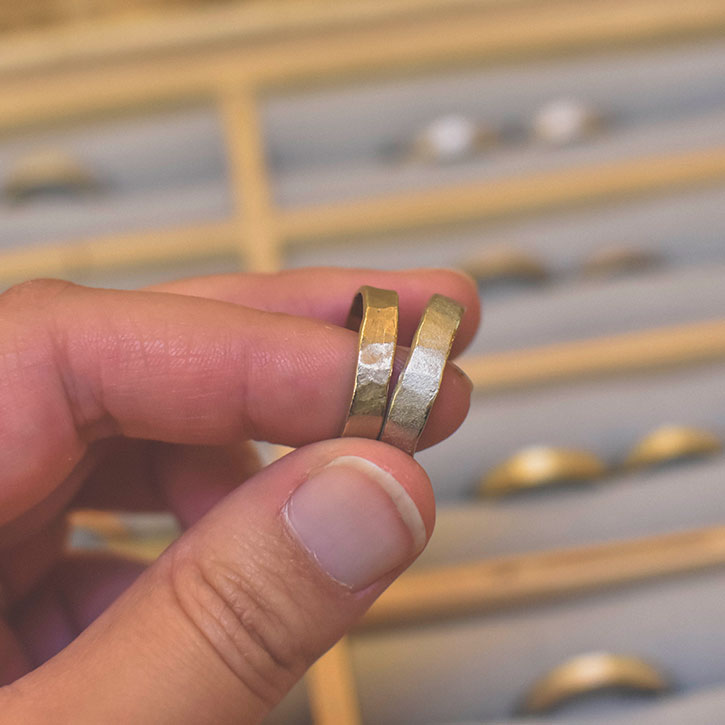What's the difference between 18-and 14-carat gold
What's the difference between 14- and 18-carat gold?
You might have noticed our rings, bracelets and other jewellery come in 14- and 18-carat gold. But what’s the difference? That’s what we explain in this article!
Carats
The carat, abbreviated as ‘c’ or ‘kt’ in the US, is a unit indicating the mass of precious metal in an alloy, i.e. the amount of pure gold in a piece of jewellery.
The difference between 14- and 18-carat gold:
- 14c gold consists of 58.5% pure gold
- 18c gold consists of 75.0% pure gold
The more carats, the deeper also the gold colour of your jewellery.
24-carat gold is no good for jewellery!
Though 24-carat gold is pure, solid gold and could logically seem like the gold standard (pardon the pun), we can’t use it for jewellery. This is because it’s too soft and delicate, and gets damaged too easily.
So we always alloy gold with other metals like copper, silver or palladium to make jewellery stronger. Or to tweak the colour a little, to make rose or white gold, for example.
Carats and prices
The more carats, the more expensive the jewellery surely. Or not? Not always, as there are some other aspects to take into account as well.
- The amount of material: a chunky bracelet in 14c gold might well be more expensive than a dainty one in 18c gold, just because the one in 14c needs more gold in real terms.
- The design costs: some designs just take more time to produce than others. A sleek 18c gold wedding ring, say, might therefore easily be cheaper than a 14c intricate ring.
And then there’s the gold price. The price of gold fluctuates over the years and months. It’s a process we have no control over.


